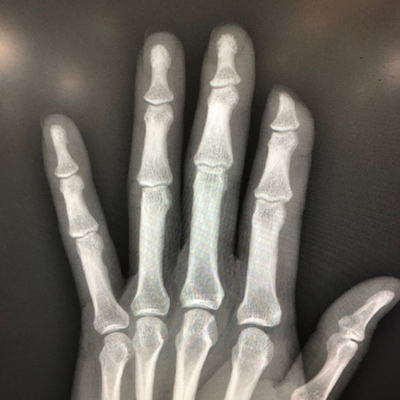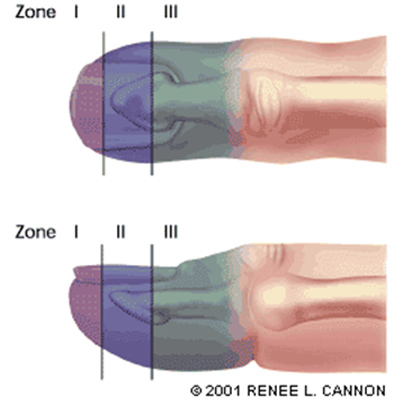Emergency Medicine Teaching Case: A Case of Finger Amputation
A previously healthy 41 year-old male presented to the emergency department via EMS after an amputation of the tip of his left index finger by a deli meat slicer.



What is ED physician’s next step in management?
- ABC: Assess for presence of other injuries.
- Hemostasis: digit amputation(s) can cause significant bleeding, and hemorrhagic shock prevention is a must. Control bleeding with direct pressure, however, tourniquets should be avoided.
- For incomplete amputations: splint the affecter portion of extremity in a physiologic position.
- Wound cleaning: clean off gross debris, may rinse with saline, but thorough mechanical cleaning should be avoided and is best postponed until OR.
- Assess for NV status and tendons involvement.
- Preservation of the amputated parts to increase chances for replantation.
- Pain control: local and/or IV. For the digit amputations, digital block is a good option.
- Tetanus status update.
- X-ray.
- IV antibiotics: treat them as open fractures.
- Hand surgery consultation for possible replantation

This amputation is in Zone III.
Zone III injuries result in the loss of bone and the partial or entire nail bed. Injuries in zone II or III may require flap coverage but most of these fingertip injuries may be treated on an outpatient basis.
Remember, ED management is the same for all amputations: all amputations are candidates for replantation unless a surgeon decided otherwise!
Excellent resources:
Courtesy of Paul Bartleson and Karima Sajadi
The information on these pages is provided for general information only and should not be used for diagnosis or treatment, or as a substitute for consultation with a physician or health care professional. If you have specific questions or concerns about your health, you should consult your health care professional.
The images being used are for illustrative purposes only; any person depicted is a model.
Back to Top